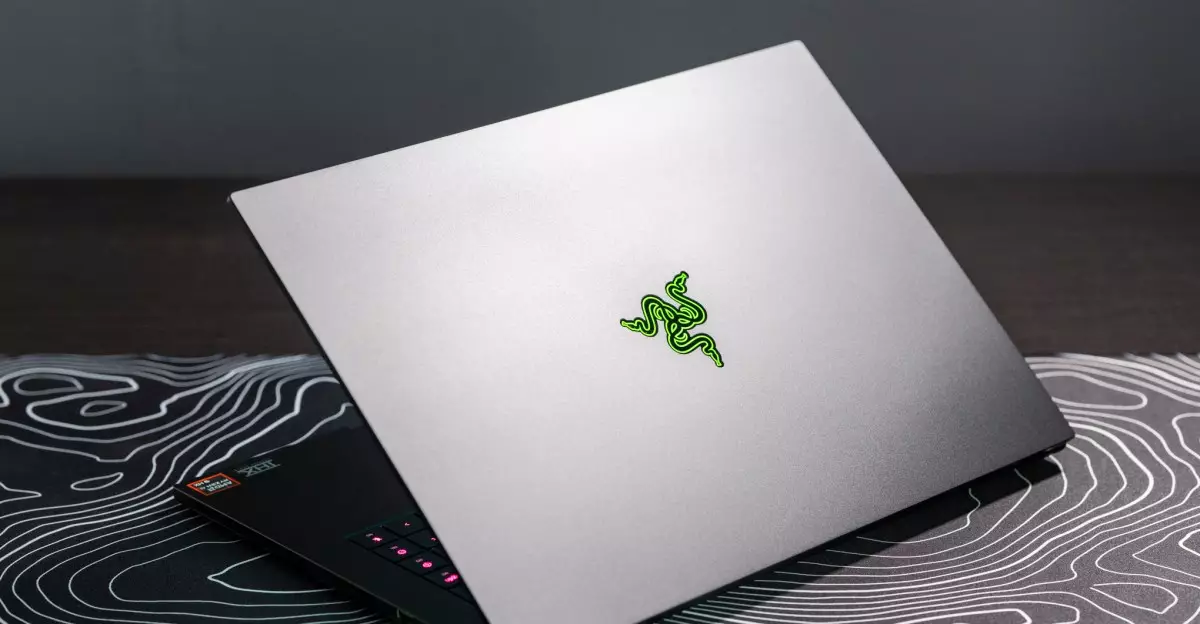The Razer Blade 16 is here, and it promises to change the landscape of gaming laptops as we know it. With a design that seeks to mimic the sleek elegance of the MacBook Pro, it unmistakably targets gamers who want performance without sacrificing aesthetics. The new thinner and lighter chassis is a breath of fresh air, especially after last year’s model felt bulkier than necessary. Retailing at a staggering $4,499.99 for the top configuration, complete with the latest Nvidia RTX 5090 GPU, this laptop holds the promise of exceptional gaming performance but raises questions about its value.
In a world where power comes at a premium, Razer is betting on the appeal of a single device capable of efficiently serving both gaming and productivity needs. But does the Blade 16 truly deliver on that front, or is it merely a well-packaged disappointment hiding behind an alluring façade?
An OLED Display That Dazzles
Let’s talk about the heart of any laptop—the display. The Blade 16 boasts a 16-inch, 2560 x 1600 OLED screen that can refresh at 240Hz. This is not just a spec; it’s a delightful reality for anyone who spends time working or playing on this device. The color reproduction is vibrant, and every pixel pops with life, making not just games but also videos and productivity tools visually stunning.
The keyboard and trackpad are decent, although the introduction of a messy array of macro keys often leads to accidental mic mutes. This design choice may target gamers wanting extended functionality, but it compromises usability for others who rely on more conventional key arrangements. It’s this type of oversight that makes you wonder whether user experience took a backseat to aesthetics in Razer’s design process.
The GPU and Performance Conundrum
Under the hood, the most significant update is the Nvidia RTX 5090 GPU, which indeed boosts performance for gamers who indulge in DLSS and frame generation technology. Initial testing indicates a 20% improvement in efficiency over the previous 4090 model. However, it is hard to embrace this advancement wholeheartedly amid hardware issues, including random blue screens even in the initial test unit. Such problems make one skeptical about whether performance can be consistently delivered in this top-tier GPU.
Even more perplexing is the Blade 16’s struggle with battery life. Using everyday applications such as Slack or Google Docs, I found myself desperate for a power outlet after just 5.5 hours of use. This isn’t just underwhelming; it’s infuriating, especially when other gaming laptops, like the Asus ROG Zephyrus G16, can breeze through long work sessions with ease. The disparity leaves one questioning whether the Blade 16 can truly stand on its claims as an all-in-one solution.
Cooling and Thermal Management
The thinner design comes with concerns regarding thermal performance. While it shaves off some millimeters and weight—which is great—how does this impact cooling? Razer introduces a laptop cooling pad that theoretically adds more power to the GPU and CPU, but at an additional cost and added noise. This feature seems to cater to a niche market of users who prioritize performance over everything else, yet it fuels doubt about the thermal management of the laptop itself without auxiliary equipment.
The Blade 16 might still be the benchmark in design for a gaming laptop, yet it invites skepticism. While the allure of a well-engineered machine remains strong, one cannot overlook the concerns regarding its thermal efficiency and crashing issues, especially at this price point.
Is the Investment Worth It?
At this price, one could purchase a competent $2,000 MacBook Pro, which not only excels in creative tasks but comfortably runs for a full day on a single charge. On top of that, you’d still have money left over for a dedicated gaming rig. Indeed, the idea of merging gaming prowess with everyday productivity in a single device is alluring, but how practical is it when the device may require frequent plug-ins to make it through daily usage?
The Blade 16 shines when it comes to gaming, offering amazing visuals and smooth gameplay, but the reality of random performance issues dampens its initial charm. The balance between beauty and performance is striking, but is it enough to justify the high price tag? The ultimate test lies ahead, and while I hold a glimmer of hope for this venture into the realm of gaming laptops, I remain cautiously optimistic. After all, the allure can only go so far when reality hits hard.


Leave a Reply